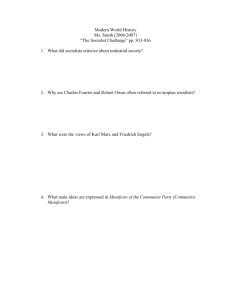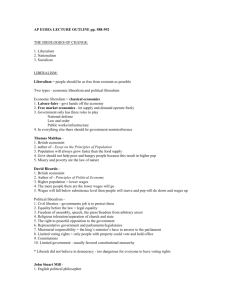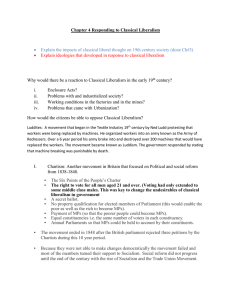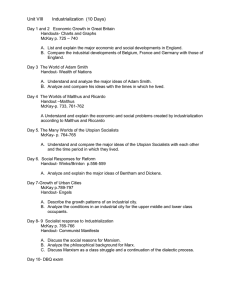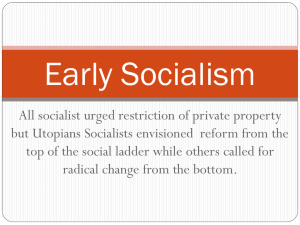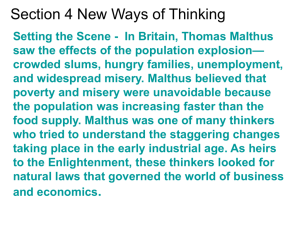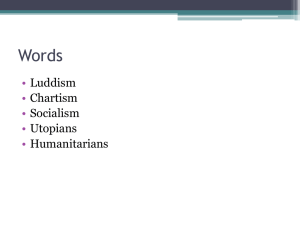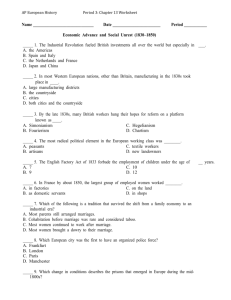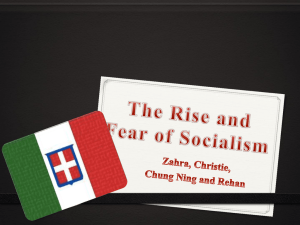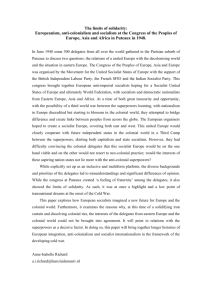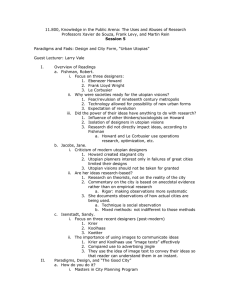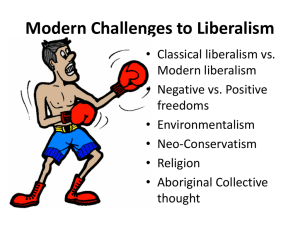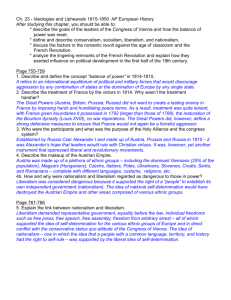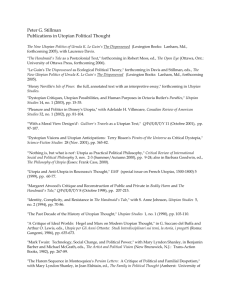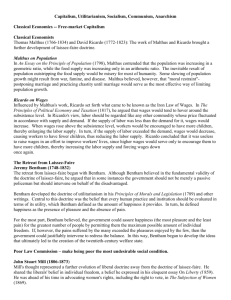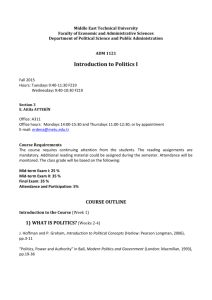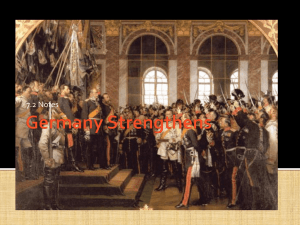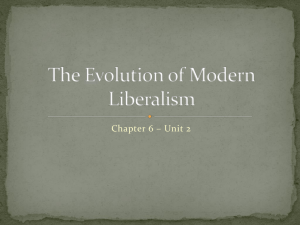I. Classical Liberalism: Adam Smith
advertisement
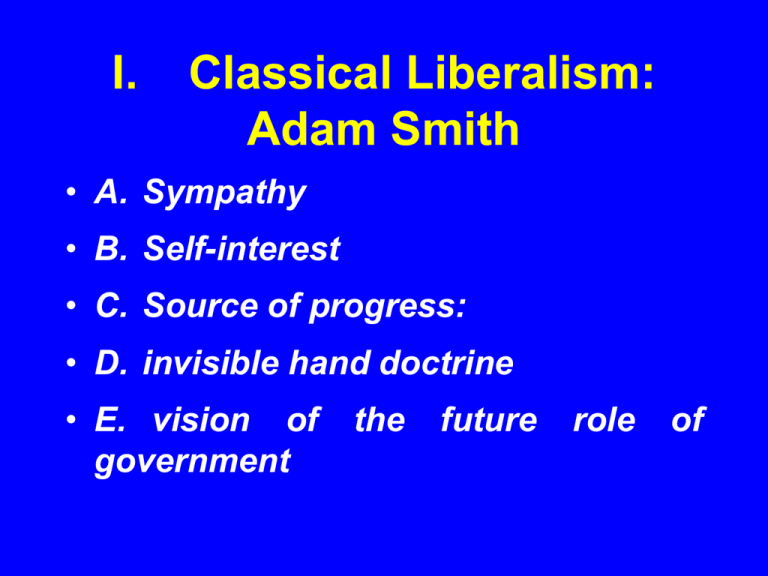
I. Classical Liberalism: Adam Smith • A. Sympathy • B. Self-interest • C. Source of progress: • D. invisible hand doctrine • E. vision of government the future role of II. Classical Liberalism: Malthus and Ricardo • A. Malthus' Theory of population • B. Ricardo’s theory of distribution and growth • C. Malthus theory of Gluts III. The Socialist Critique: The Utopian Socialists • A. Utopia--nowhere place • B. Term coined by Marx IV. Historical Backdrop: • A. French Rev was the source of modern socialist movement. – The problem raised by the French Revolution: the rational reorganization of society. – There was nothing in the history of either England or Germany to suggest such an approach. As late as 1848, there was no real socialist movement outside of France • B. Industrial Revolution creation of a free market and the – Sense of cultural dissolution of society resulting from appalling social conditions – These conditions were either denied or dismissed by Classical Liberalism as the inevitable price of progress • C. Both socialism and conservatism shared something in common: events were atomizing society, traditions and traditional morality were being shattered. V. Characteristics of utopian socialists • A. Effort to construct a new theory of human nature • B. Focus on the moral-ideological sphere as determining all other aspects of human behavior • Mostly reformers Robert Owen-• A. theory was based on a continuation of themes beginning with the enlightenment. – 1. Established New Lenark – 2. Solution to poverty: make the poor productive through benevolence – 3. Education for children – 4. The perfectibility of human nature through the application of reason. • B. Man is the product of his circumstances; change his circumstances and you change the man. • C. Existing moral, political, and religious theories (not class or state policies) are the principal obstacles to social reorganization. VI. Henri St. Simon • A. Society could do without its upper crust: its politicians, judges, and so on and be no worse off • B. Lose the artisans, craftsmen, and workers and society would come to a halt VII. Charles Fourier-• Everyone should work, but only for a few hours each day • Let children do the dirty work VIII. J.S. Mill (1806-1873) • A. Sought to synthesize classical economics and the socialist critique into a coherent concept of society. • B. Early education IX. Two major influences: • A. Utilitarianism of Jeremy Bentham – 1. Mankind is guided by 2 sovereign masters – 2. Greatest good for the greatest number • B. Romantic movement (which inspired the Utopian Socialists): – 1. Harriet Taylor – 2. Mill's sympathies for the poor, and for women X. Reconciling utilitarian and romantic influences • A. Laws of production--natural laws • B. Laws of distribution--social laws • C. Independence of production from distribution XI. Vision of the future: • A. Stationary state and Socialism • B. Anticipates the mixed economy (Corporate-welfare state) where government is a major player in the market system XII. Marx's critique of the early socialists: • A. Their endeavors were essentially Utopian. • B. They had views of what the good society would entail, but they did not have a plan for achieving it. • C. They sought to totally transform society, abolish private property, competition, and individualism without recognizing the necessity of class struggle and the revolutionary role of the proletariat.

